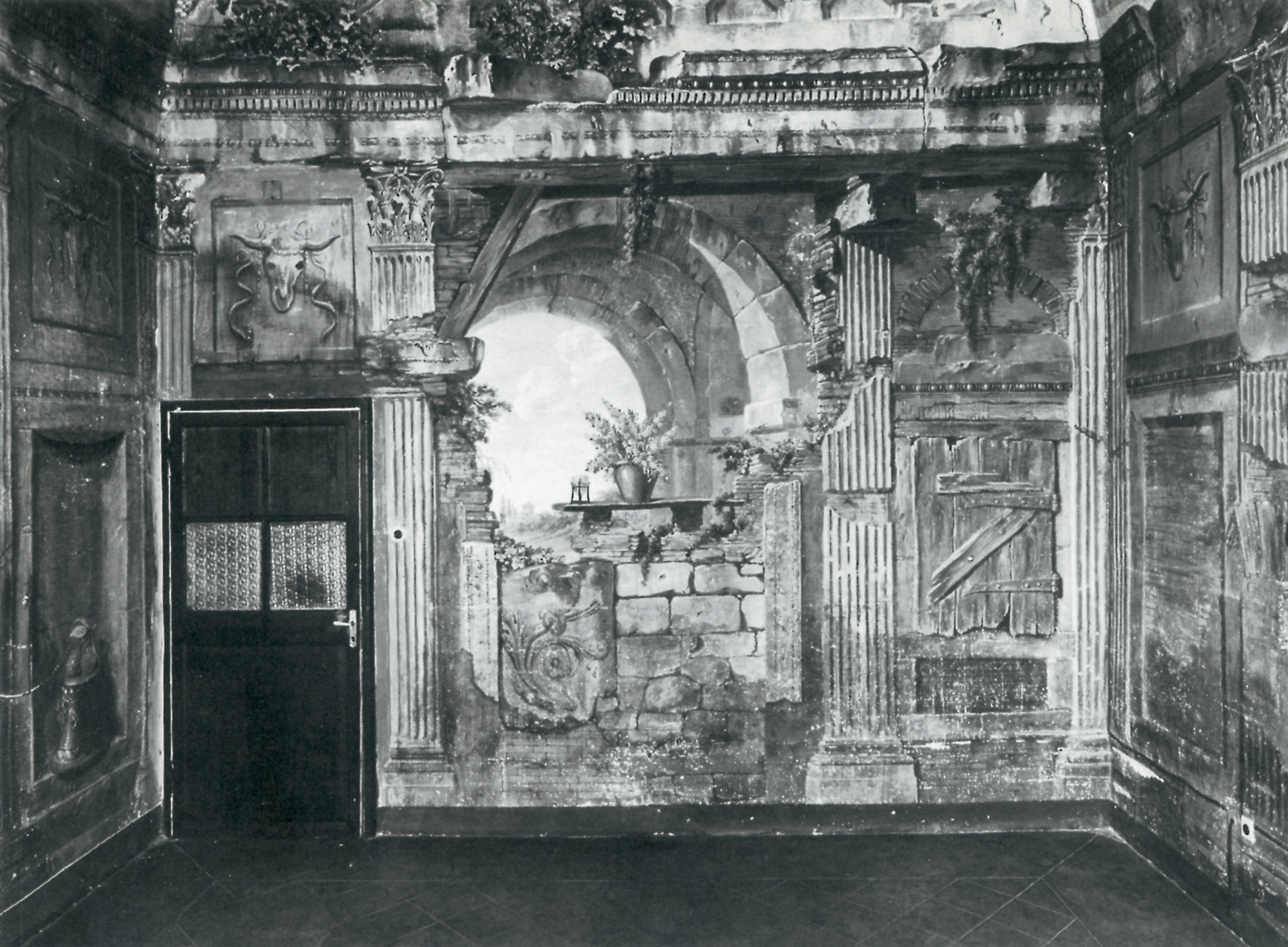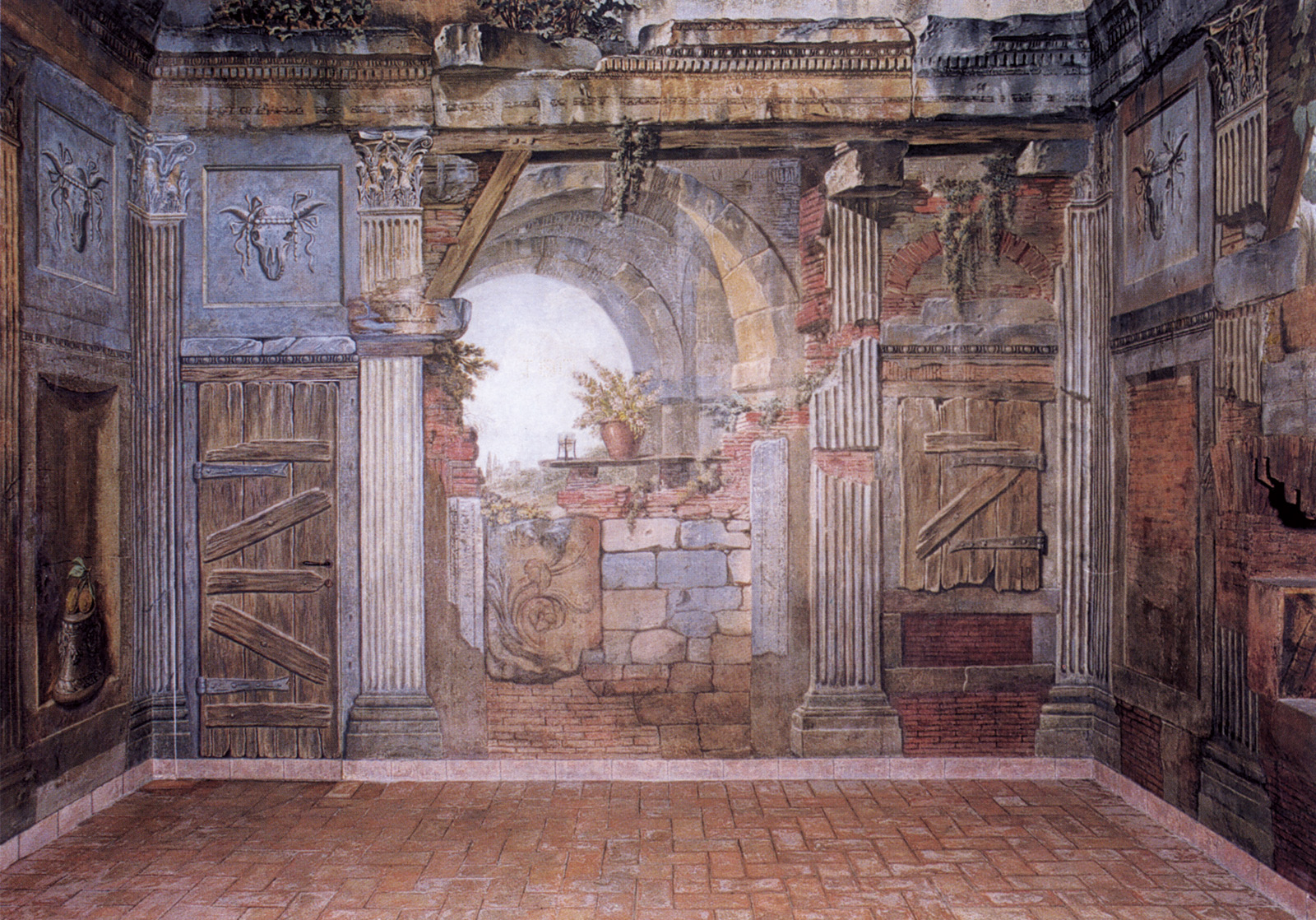Winter 2005–2006
Introductory Image


A cell at the Convent of Santa Clara at Santa Trinità dei Monti, Rome. Painted in the 1760s by the French artist Charles-Louis Clérisseau, the trompe-l’oeil interior represents a ruined temple. The top photograph from ca. 1980 shows Clérriseau’s original boarded-up panel replaced with a functional door. The bottom photo, ca. 2000, shows the same wall after a recent restoration in which the modern door was again replaced by a boarded-up panel. The room’s furniture––desk, table and chairs that Clérriseau designed to resembled crumbling fragments––has been lost. Christopher Woodward, in his book In Ruins, writes: "For a very long time this room was known only by the design drawings and it was assumed to have disappeared, but in the 1960s it was discovered intact. … The room was made for Father LeSueur, a monk who was also a mathematician of distinction. One trompe-l’oeil book is lettered NEWTON on its spine. This was his bedroom and study and we can only speculate as to why he chose to live in ruins; was it, I wonder, a reminder that his scientific studies were only a particle of dust in God’s scheme?"
Spotted an error? Email us at corrections at cabinetmagazine dot org.
If you’ve enjoyed the free articles that we offer on our site, please consider subscribing to our nonprofit magazine. You get twelve online issues and unlimited access to all our archives.